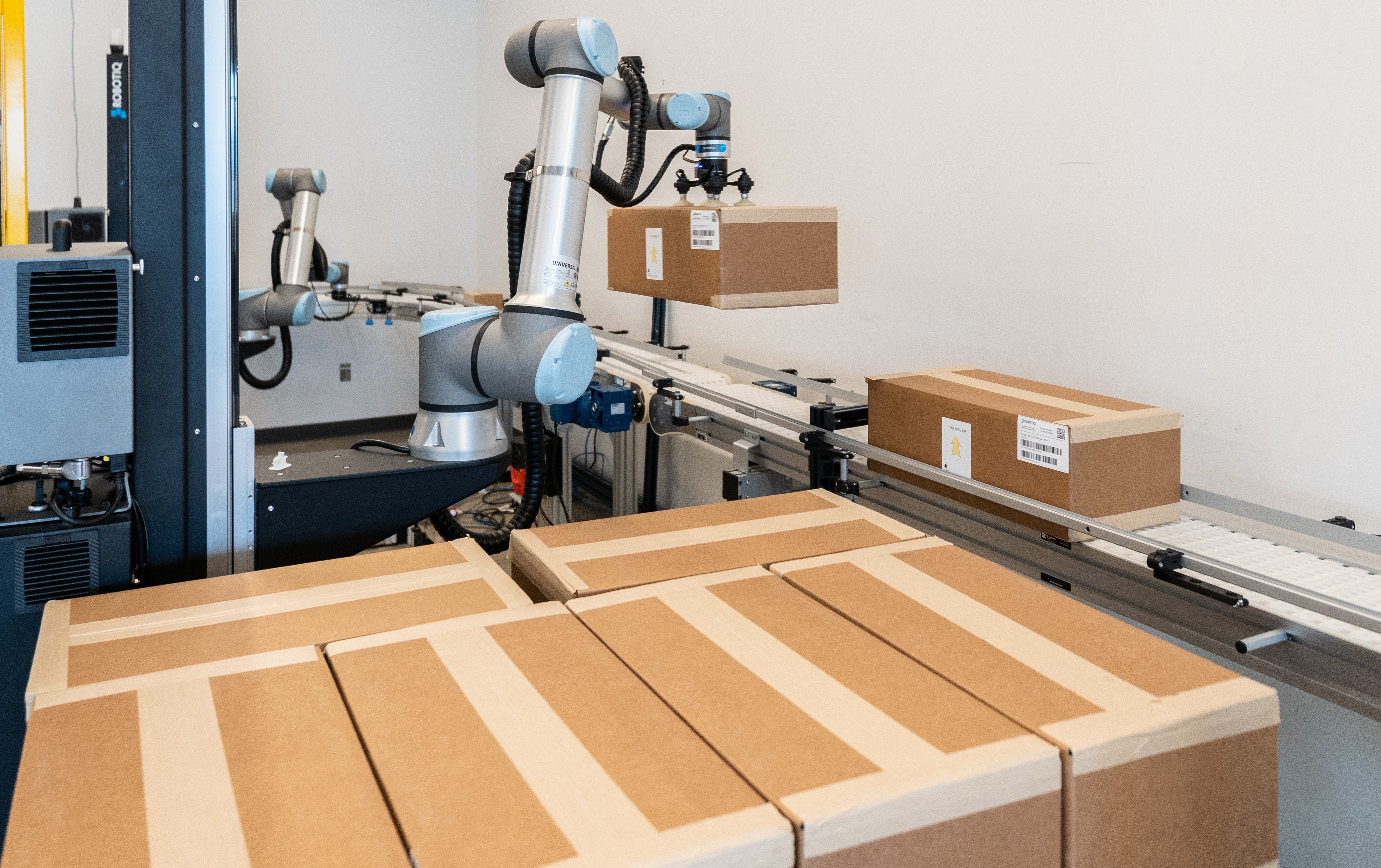Improve Your Efficiency in Logistics Operations With Robots

Is it possible to improve the efficiency in logistics with robotics?
Unlike in other areas, it's not always obvious how robots fit within logistic processes. However, the number of robots in logistics is growing a lot right now. Like your competitors, you can benefit from the efficiency gains provided by approaching robotic automation in the right way.
Which logistics applications are suitable for robotics?
How do you measure the efficiency improvements introduced by a robot?
And what is efficiency in logistics in the first place?
Let's take a look at efficiency in logistics and explore whether robots might be a useful tool to help you improve the efficiency of your operations.
Efficiency in logistics: Why it's so important
It's relatively easy to measure the efficiency of, say, a manufacturing process. There are simple, defined formulas that determine the efficiency of any particular manufacturing step.
In logistics, efficiency is not always so easy to define.
Various factors make it difficult to measure efficiency in logistics including conflicting goals, the interdependence of subsystems, and the impact of supply chains on performance. The formulas to calculate efficiency aren't simple and they vary hugely depending on the type of logistics operation you are measuring and the research you read.
But, you don't need to use complex algorithms and formulas.
Sometimes, it's helpful to look at efficiency more simply…
What is logistics efficiency?
At its most basic, logistics efficiency means that your business transports, stores, and distributes materials with a minimum of waste. The better your efficiency, the less wasteful your processes. This means you waste less budget, energy, time, and natural resources.
8 types of waste can affect logistics processes: transportation, waiting, overproduction, defects, inventory, movement, overprocessing, and underutilizing human potential.
These are the same 8 wastes that robots are a proven tool to overcome.
How to make logistics more efficient with robots
In logistics, many tasks are dull and repetitive.
Moving boxes onto pallets, for example, is a boring task for humans to perform. This often contributes to inefficiencies as humans tend to perform worse over long shifts when their jobs are not rewarding. However, palletizing is a core step in any logistics process so you can't eliminate the task completely.
Robots offer a way to automate such repetitive tasks. This allows humans to perform the more challenging and rewarding logistics jobs, like responding to last-minute changes, dealing with breakdowns, and handling nonstandard requirements.
As long as you are using robots efficiently, they can help you to reduce wastes in your process. This in turn improves the efficiency of your entire process.
3 ways to improve logistics efficiency with robot application kits
What logistics tasks can you give to a robot? Not all tasks should be automated.
Here are 3 common robotic applications that are useful for logistics. They are so common that they come available as application kits, which include everything you need to deploy the application quickly and efficiently.
1. Palletizing
An extremely common task in logistics, palletizing is perfect for robotics. It involves a repetitive action that can cause injury to human workers over time.
Robots are more flexible than other forms of palletizing automation. They can be quickly and easily programmed to handle whatever boxes or other items you need to palletize.

2. Pick and place
Many logistics tasks involve moving objects from one place to another. For example, packaging involves placing items into boxes. Similarly, preparing orders involves picking and sorting items.
Pick and place is a perfect task for robots. They are more consistent than human workers and simple programming options make the task very easy to set up.
3. Machine tending
Tasks like labeling or wrapping often require the use of semi-autonomous machines. Usually, a human worker has to feed objects into those machines. This is a dull task and their work adds nothing to the process.
A machine tending robot can take this task away from the human. In the process, this will often improve the consistency of the task.
Use these logistic efficiency metrics to measure your progress
How can you tell if the efficiency of your task is improving when you have added a robot?
Although it is difficult to accurately calculate efficiency in logistics, there are various metrics you can use to measure how well the robot is performing in a logistics setting.
Useful metrics include:
- Shipping time — How soon is an item shipped after it is ordered?
- Perfect order — What percentage of the orders are shipped with no issues?
- Capacity utilization — How much is the robot used compared to how much it could be used?
- Cycles completed — How many cycles of the robot's program does it perform in a specified amount of time?
- Wait time — How much of the robot's time is spent waiting for other processes to happen?
You can find more about useful metrics for robot operation in our eBook Top 5 Cobot Key Performance Indicators.
The first step for adding robots to improve efficiency
How can you get started improving the efficiency of your logistics operations with robotics?
It can seem like there is a lot to get your head around when you are first considering using robotics for a new operation. However, a simple place to start is just to have a look at the different application kits that are available.
As well as using an application kit, you can also improve the efficiency of your operation by deploying your robot using the Lean Robotics methodology.
What logistics tasks could you improve with a robot? Tell us in the comments below or join the discussion on LinkedIn, Twitter, Facebook, or the DoF professional robotics community.






Leave a comment